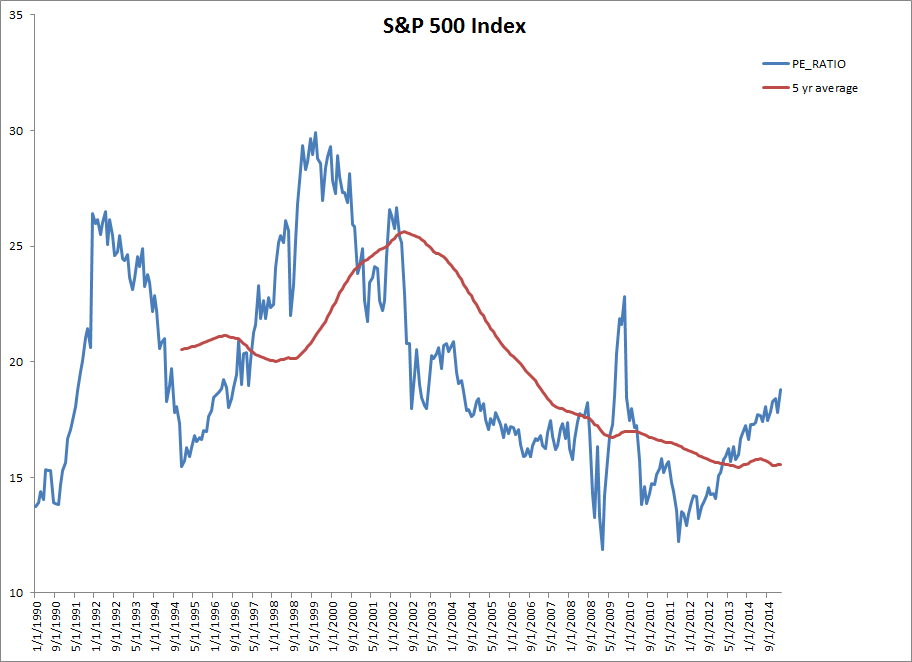Examining Valuation Metrics
Post on: 1 Апрель, 2015 No Comment

Editors note: This article is aimed towards an audience with little experience in value investing. In parts II and possibly III we will focus more on more advanced information.
Best Metrics for Evaluating Value Stocks
When looking for a value stock the value investor should look at the intrinsic value of a business and see if this is currently in excess of the market value of the shares. This process involves more than just looking for a bargain that may arise because share prices have dropped suddenly. The business the investor buys into must have real value. If the company is only of mediocre performance its shares should not be acquired just because there has been a recent dip in the share price.
Following the thinking of Warren Buffett you can look at ownership of a share in a company as participating in the whole business and consider the share as a participation in the company rather than valuing it in terms of a stream of dividends. The metrics that may help to establish the true value of the company are the ones of most interest to the value investor.
Price earnings ratio
The price earnings ratio (P/E ratio) in itself does not say very much about the intrinsic value of a company or the difference between market value and intrinsic value. It reflects how many years’ earnings are paid for in the share price. The figure is useful because the P/E ratio of a company can be compared to those of other companies within the same industry and the investor can gain some information about the valuation of the company as compared to the competitors in the same industry. Where a company has a low price earnings ratio compared to other companies in the same industrial sector this may be a first indication that a company may be undervalued. The value investor should therefore consider the P/E ratio as an indicator a low P/E ratio could be a sign that a company is undervalued but further research needs to be done.
Some investors look at the price/earnings to growth (PEG) ratio which divides the P/E ratio by the rate of growth in earnings per share. This may indicate a growth stock that is currently undervalued. Again, this is just a first indicator and more research is needed.
Price to book ratio
The price to book value of assets should be approached with caution by value investors. Although a high price to book ratio indicates that investors are prepared to pay much more than the book value of the assets when buying a share, research needs to be done into the reasons for this. The ratio could be very different depending on whether the company is offering goods or services and using mainly tangible or intangible assets. A high price to book ratio is therefore a valuable initial indicator that a stock could indeed be a value stock but further research is needed before any conclusion can be reached.
Free cash flow
The free cash flow in any accounting period is found by taking the net profit figure and adding back non-cash items such as depreciation. A further deduction is then made for the amount of capital expenditure required in a year to maintain the assets of the company at an adequate level to continue to earn profits. Any company with positive free cash flow is better able to face difficult periods of trading. A company could be valued by discounting the future free cash flows provided that they can be reasonably estimated. The investor needs to understand the business thoroughly to make a reasonable attempt at this calculation.
Debt equity ratio
Most of us have had an opportunity in recent years to see the negative consequences of carrying too much debt in business and in government. The debt to equity ratio of the business should be checked out in combination with other ratios in evaluating the company. This can function as something of a negative indicator. A company whose fundamentals otherwise look good could be running into a headwind if its level of debt is too high compared to equity. The way in which a company finances its operations is relevant to its future performance as the burden of servicing the debt can weigh heavily on the business especially if it hits a difficult patch in its operations.
Using the metrics as a guide
All value investors should realize that the metrics are not everything. Research into a company means more than dividing one accounting figure by another. The metrics can be an indicator of a good opportunity but further research about the company is always needed. The value investor must look behind the accounting ratios and research the real business. This involves understanding the company, its business and its management to arrive at an opinion of its future performance and intrinsic value.














